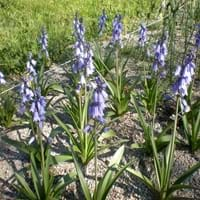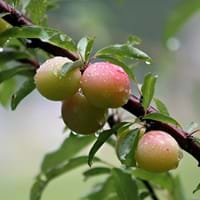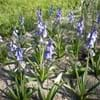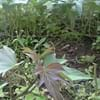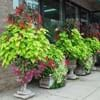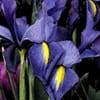Life Span
Perennial
Perennial
Type
Bulb or Corm or Tuber
Tree
Origin
Southern Europe, Western Europe, Northern Africa
Northeastern United States, Mid-Atlantic United States, Southeastern United States, Central United States, Northwestern United States, Southwestern United States, Texas, Canada
Types
Hyacinthoides flahaultiana, Hyacinthoides mauritanica, Hyacinthoides reverchonii
Not Available
Number of Varieties
Not Available
Habitat
Parks, wastelands, Waysides, Woodland edges
fencerows, Thickets, Upland savannas, Woodlands
USDA Hardiness Zone
4-10
3-8
Sunset Zone
21,22
1a, 1b, 2a, 2b, 3a, 3b, 10
Habit
Clump-Forming
Oval or Rounded
Flower Color
White, Blue, Pink, Blue Violet
White
Flower Color Modifier
Bicolor
Bicolor
Fruit Color
Not Available
Yellow, Red
Leaf Color in Spring
Green
Green, Dark Green
Leaf Color in Summer
Light Green
Green, Dark Green
Leaf Color in Fall
Several shades of Green
Green, Yellow green
Leaf Color in Winter
Light Green
Not Available
Plant Season
Spring
Spring, Summer
Sunlight
Partial Sun, Partial shade
Full Sun, Partial Sun
Growth Rate
Medium
Medium
Type of Soil
Loam
Clay, Loam, Sand
The pH of Soil
Acidic, Neutral
Acidic, Neutral, Alkaline
Soil Drainage
Well drained
Average
Bloom Time
Spring, Late Spring
Early Spring, Spring, Late Winter
Tolerances
Drought
Cold climate
Where to Plant?
Ground
Ground
How to Plant?
By dividing rhizomes, tubers, From bulbs, Seedlings
Seedlings, Stem Cutting
Plant Maintenance
Medium
Medium
Watering Requirements
Average Water Needs, Do Not over Water, Requires regular watering
Keep the ground moist but not water-logged, Needs watering once a week
In Summer
Lots of watering
Lots of watering
In Spring
Moderate
Moderate
In Winter
Average Water
Average Water
Soil pH
Acidic, Neutral
Acidic, Neutral, Alkaline
Soil Type
Loam
Clay, Loam, Sand
Soil Drainage Capacity
Well drained
Average
Sun Exposure
Partial Sun, Partial shade
Full Sun, Partial Sun
Pruning
Pinch Tips, Remove damaged leaves, Remove dead branches, Remove dead leaves, Remove dead or diseased plant parts
Prune in the late winter or spring, Remove damaged leaves, Remove dead branches, Remove dead leaves
Fertilizers
High amounts of nutrients, organic fertlizers
All-Purpose Liquid Fertilizer
Pests and Diseases
Red blotch
bees, Borers, Red blotch
Plant Tolerance
Drought
Drought
Flower Petal Number
Single
Single
Foliage Texture
Medium
Medium
Foliage Sheen
Glossy
Matte
Attracts
Birds, Butterflies, pollinators
Bees, Birds, Deers
Allergy
Pollen
Mild Allergen
Aesthetic Uses
Showy Purposes
Beautification, Landscape Designing, Showy Purposes
Beauty Benefits
Not Available
Not Available
Environmental Uses
Air purification
Air purification
Medicinal Uses
Not Available
Antioxidants, High cholestrol, Iron, Nutrients
Part of Plant Used
Flowers
Fruits
Other Uses
Beneficial species for attracting pollinators, Decoration Purposes, Showy Purposes, Used for Landscaping
Food for animals, Used as a nutritious food item, Used as Ornamental plant, Used for its medicinal properties
Used As Indoor Plant
No
No
Used As Outdoor Plant
Yes
Yes
Garden Design
Container, Cutflower, Mixed Border, Rock Garden / Wall, Wildflower
Edible, Fruit / Fruit Tree, Screening / Wind Break, Topiary / Bonsai / Espalier, Wildflower
Botanical Name
HYACINTHOIDES hispanica
PRUNUS americana
Common Name
Spanish Bluebell
Wild Plum
In Hindi
Bluebell plant
जंगली बेर
In German
Endymion Pflanze
wild Plum
In French
plante Bluebell
wild Plum
In Spanish
planta Bluebell
ciruelo silvestre
In Greek
φυτό Bluebell
Κορόμηλο
In Portuguese
planta Bluebell
Wild Plum
In Polish
Bluebell roślin
dzikiej śliwy
In Latin
Bluebell herba
Wild Plum
Phylum
Magnoliophyta
Magnoliophyta
Class
Liliopsida
Magnoliopsida
Family
Liliaceae
Rosaceae
Genus
Hyacinthoides
Prunus
Clade
Angiosperms, Monocots
Angiosperms, Eudicots, Rosids
Tribe
Hyacintheae
Not Available
Subfamily
Scilloideae
Amygdaloideae
Importance of Bluebell and Wild Plum
Want to have the most appropriate plant for your garden? You might want to know the importance of Bluebell and Wild Plum. Basically, these two plants vary in many aspects. Compare Bluebell and Wild Plum as they differ in many characteristics such as their life, care, benefits, facts, etc. Every gardener must at least have the slightest clue about the plants he wants to plant in his garden. Compare their benefits, which differ in many ways like facts and uses. The medicinal use of Bluebell is Not Available whereas of Wild Plum is Antioxidants, High cholestrol, Iron and Nutrients. Bluebell has beauty benefits as follows: Not Available while Wild Plum has beauty benefits as follows: Not Available.
Compare Facts of Bluebell vs Wild Plum
How to choose the best garden plant for your garden depending upon its facts? Here garden plant comparison will help you to solve this query. Compare the facts of Bluebell vs Wild Plum and know which one to choose. As garden plants have benefits and other uses, allergy is also a major drawback of plants for some people. Allergic reactions of Bluebell are Pollen whereas of Wild Plum have Mild Allergen respectively. Having a fruit bearing plant in your garden can be a plus point of your garden. Bluebell has no showy fruits and Wild Plum has showy fruits. Also Bluebell is flowering and Wild Plum is not flowering . You can compare Bluebell and Wild Plum facts and facts of other plants too.
